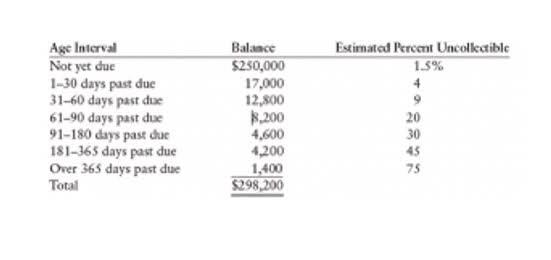
A common reason for a lingering balance on your opening balance equity account includes bank reconciliation adjustments that weren’t done properly. Always make sure to account for uncleared bank checks and other factors. This is good because opening balance equity should be temporary by design. I tried to do my research but I am still having a hard time understanding the function of Opening Balance Equity. From what I’ve gathered, the OBE account is for entering the balance of an account when it first connects with QuickBooks, but beyond that I’m lost. Someone before me did some journal entries in the OBE to get the balance to 0.00, but they put it into Undeposited Funds and now every time I make a bank deposit, the OBE petty cash balance is included with the checks.
What Is Opening Balance Equity? Definition And Importance
- But there’s surprisingly little practical advice that I can find about how to actually deal with this.
- The Opening Balance Equity account value may be the same as that of the last year’s Retained earnings.
- Once you know the balance in the opening balance equity account and the appropriate target equity account, you can prepare the journal entry to clear the opening balance equity.
- Since opening balance equity serves as a temporary clearing account, it is considered good practice to review and clear it regularly to maintain clear and professional financial statements.
- To make the OBE balance positive and not negative, I suggest reviewing the outstanding checks and deposit transactions.
- For example, if a fixed asset was entered as an expense, it can cause the opening balance equity account to be incorrect.
- In some cases, incorrect entries in Opening Balance Equity could be the result of mistakes made when recording certain transactions (like deposits or loan repayments).
In simpler terms, it refers to the amount of money put into the company at the beginning of its operations. Capital contributions by partners or shareholders can lead to the existence of opening balance equity, indicating the infusion of capital into the business at the beginning of a new accounting period. Opening Balance Equity is a financial term used in accounting to represent the initial investment or capital contributed by the owner(s) of a business entity at the beginning of a fiscal year or accounting period. QBO only allows the creation of a singular account under the Opening Balance Equity (OBE) account detail type. If you can’t create one, it’s possible that it already exists and has been renamed in your Chart of accounts. I’m here to provide the steps to help locate it and suggest a process to resolve the discrepancies in the account.
Step 1: Review Your Opening Balance Equity Account
Click here for free downloadable balance sheet templates you can use now. QB is double entry accounting, so for every entry there has to be an equal entry in a second account. Normally that credit books to income or sales or something because you made money, but when setting up a bank account that amount comes from the owners. Opening balance equity helps offset the opening balance transactions, providing the correct start for a balance sheet and the financial records in the long run. The reason why QuickBooks posts an opening balance equity every time you update your credit card is because it downloads to all accounts when connecting it. To make things right and start managing transactions seamlessly from multiple cards, I’d recommend adding the other credit cards as a sub-account.
Focus on growing your business
Having a negative balance would typically indicate the account is in the negatives. If you’re unsure of why, I’d recommend working with an accounting professional. If you’re in need of one, there’s an awesome tool on our website called Find a ProAdvisor. All ProAdvisors listed there are QuickBooks-certified and able to provide helpful insights for driving your business’s success. Opening Balance Equity is an account in the balance sheet that represents the initial investment made by the owner or shareholders to start a business.
Bridging Historical Data Gaps

He’s also a computer programmer and the creator of Huskey Practice Manager, a tool designed to help streamline accounting practices. Here on the blog, Jason shares insights from his experiences in both accounting and tech. Let us know in the comments if you require further assistance managing your accounts or any other concerns in QBO. We’re always available if you need more assistance managing your accounts in QuickBooks Online. Here you will get answers to all your questions related to opening balance equity. Suppose the founder starts a new business with an opening share capital of 100.

Always document the journal entry and your reason for clearing opening balance equity. This is helpful for auditors, accountants, or anyone reviewing your financial records. Documentation ensures transparency and clarity in your bookkeeping process. When you record the rationale behind the adjustment, including references to reports reviewed or discrepancies identified, you create a reliable audit trail that reinforces accountability. Opening balance equity serves an important role when transitioning to new accounting software or starting fresh with bookkeeping. It allows you to input prior balances without manually adjusting every equity account immediately.
New Business Opening Entry Journal Example
Maintain professional balance sheets and simplify accounting Remote Bookkeeping reports with FreshBooks. – An opening balance that is incorrect if the bank reconciliation adjustments are not made properly. – Forgot to illuminate the opening balance equity account when the need was over.

Thank you for consistently engaging with us regarding your inquiries about the opening balance equity. I also appreciate the screenshot you’ve shared that shows the amount for this account in your Balance Sheet report. To make the OBE balance positive and not negative, I suggest reviewing the outstanding checks and deposit transactions. It’s also important to verify if there are any pending transactions that could impact opening balance equity the balance. Inaccurate representation of historical transactions can impede decision-making, hindering the ability to plan effectively for future business endeavors.
Although they may seem similar, retained earnings and opening balance equity have differences. Retained earnings are shareholders’ earnings after deducting the past year’s distributions and deductions. You should not post transactions in this account unless an adjustment entry comes. You should close out this account for remaining earnings and not hold any balance.

Leave a reply